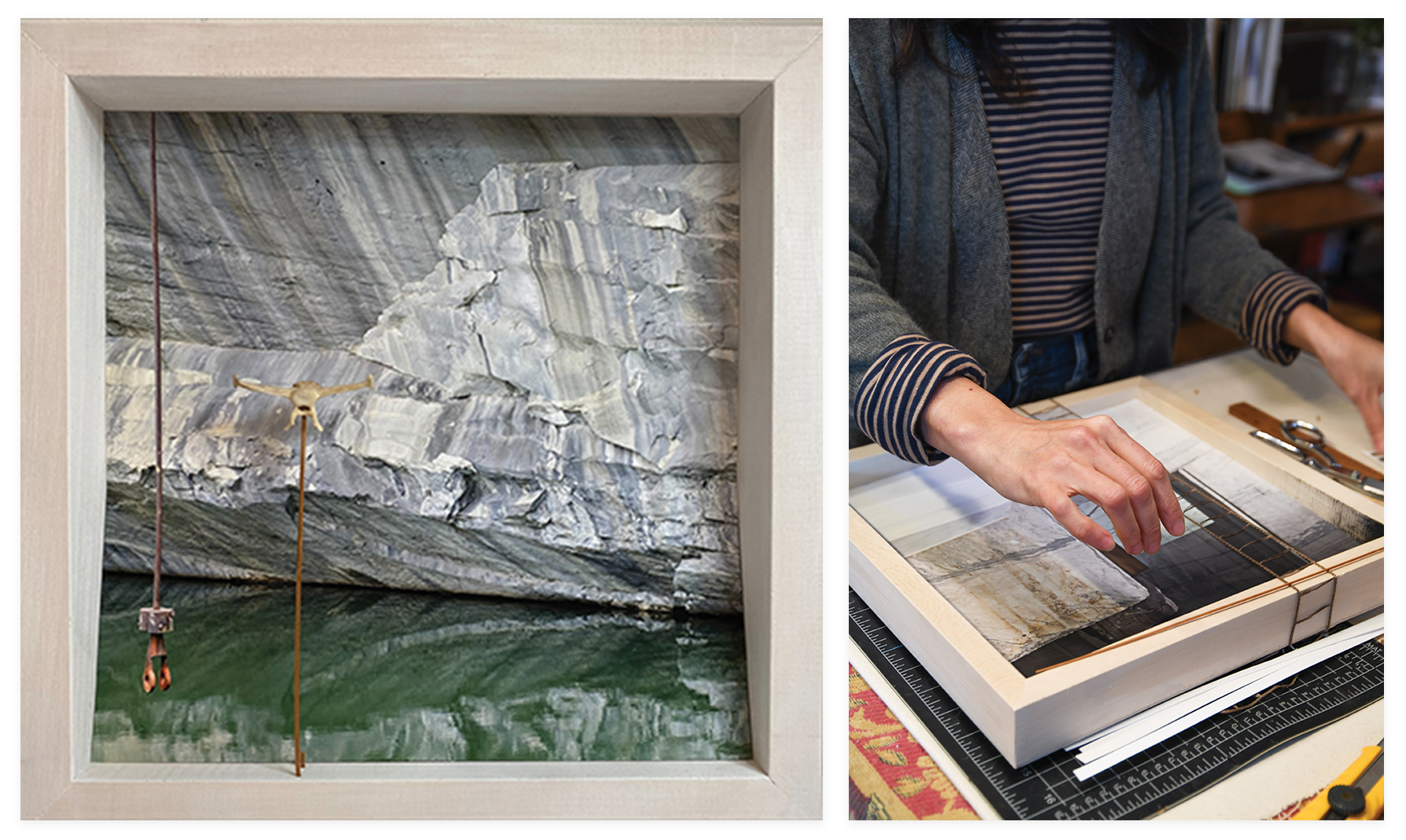See Matsuda’s work at two shows this month: One at Redux and the other at Hed Hi Studio

Hirona Matsuda is participating in two exhibits this month, showcasing her art that uses found objects.
Constructed of organic materials with the occasional manufactured object, Hirona Matsuda’s assemblage boxes and large-scale installations reveal a fascination with the past. The beauty of her work is how she wields spare elegance to capture the exact moment of remembering before it devolves into longing or nostalgia. Even in the kinetic pieces, there is a sense of quiet that evokes a space outside of time.
The artist’s memories are stored in these objects, bringing her private experiences into the public domain where we can meet and discuss our shared humanity. It’s a courageous gift, but such is the alchemy of Matsuda.
Her childhood and family life are the center of her creative career. When she was young, her Irish mother, Japanese father, and younger brother moved from Boston to North Carolina. All were semi-outsiders to American culture, never mind Southern culture, so the family unit became something of a life raft in a sea of not-belonging. Though Matsuda’s father has passed on and her mother and a younger sister returned to Ireland, they are close, and their bond remains extremely important to her.

Aureole (found object shadow sculpture, 8 x 4 x 10 feet, 2023)
After graduating from the College of Charleston in 2007 with a double major in art and anthropology, Matsuda continued to develop her assemblage practice while curating shows, collaborating with other artists, and working at Artist & Craftsman Supply, where she is the director of merchandising. This month, Matsuda is collaborating with multimedia artist Kirsten Hoving for “Photo | Object” at Redux Contemporary Art Center through March 16, followed by a solo show, “Shadow Party,” at Hed Hi Studio opening on March 9.
Choosing a Medium: I was very much into natural sciences in college, but by the end of the first semester, I knew it wasn’t for me. My adviser told me about the connection between anthropology and biology, so I switched majors. I had focused on ceramics in high school and loved it. In college, I jumped straight into sculpture, but got to work with different materials including a lot of found objects. When I look back, I was really always doing assemblage work.
Creative Evolution: My work has intentionally moved to a larger scale in the last few years. When I started working bigger, it brought out the minimalist in me. Things got cleaner, and I moved away from metal and more toward wood. This happened around the time a lot was going on with my family. My brain couldn’t handle clutter; I just needed to find space.
Being the Observer: You do have to remove yourself to capture a feeling. My family is extraordinarily important to me, and I make a lot of backward-looking work. Anything that is remotely representative is meant to rebuild a specific moment.
Finding Meaning: Sometimes people ask me, “What is this?” and I’ll start by pointing out a specific object. Then they start pointing out other objects familiar to them and suddenly they’re relating to the piece as a whole. I always enjoy engaging with non-art-seeking people. Other times, people will engage with no context clues. They’ll tell me what it reminds them of, and often, it’s similar to my feelings about the work.

(Left) Duet II (digital photograph and found object assemblage, 12 x 12 inches, 2024) with artist Kirsten Hoving; (Right) Matsuda often uses shelves, cages, and ladders in her assemblages.
Decoding Symbolism: I repeat a lot of motifs in my work, such as ladders, cages, shelves, lights, and light fixtures. Each has significance as an object, but they’ve grown to symbolize certain feelings, though not always. I use ladders to convey a path to something out of reach or a means of escaping the weight of being on the ground level, so to speak. Cages create beautiful lines and shadows and sometimes lead to a narrative of being perpetually stuck even though there’s an obvious way out. Shelves can indicate something is precious or out of reach, and light can mean goals, beacons, or something to move toward or attain.
Found Materials: A lot of my objects are found, and Charleston is magical because we have a culture of putting things on the curb for other people to take. Sometimes I’ll disassemble functional items in my house or build or manipulate things. It’s not all salvage—sometimes I’ll buy objects. Then, it’s all about making these nonuniform objects hold together.
For Display: For “Photo | Object,” everyone in the show is primarily a photographer except for me. I’m collaborating with Kirsten Hoving, using her photos as elements in my assemblages. Objects can overpower images, so it’s all very minimal. “Shadow Party” will be an immersive installation using lots of projected light, sound, and cast shadows.
“Photo | Object” is open through March 16 at Redux Art Center, and “Shadow Party” is open March 9 -11 at Hed Hi Studio. See more of Matsuda’s work at Corrigan Gallery or hironamatsuda.com.